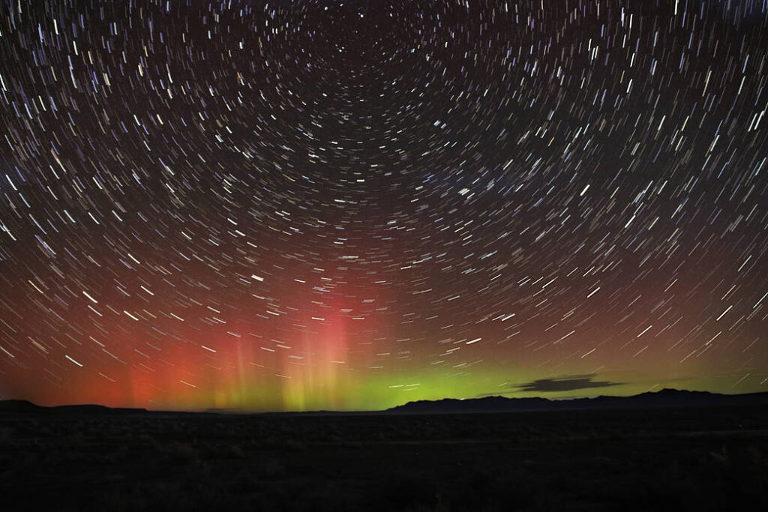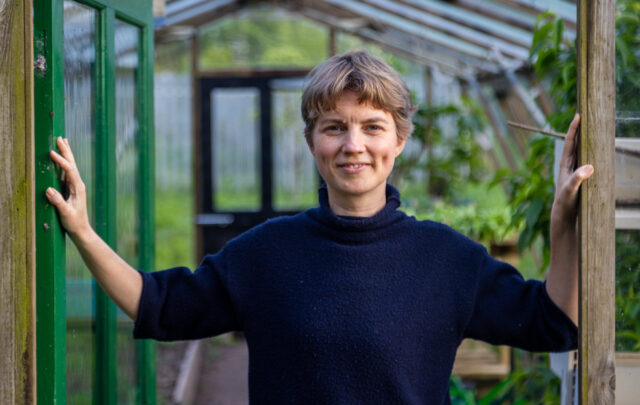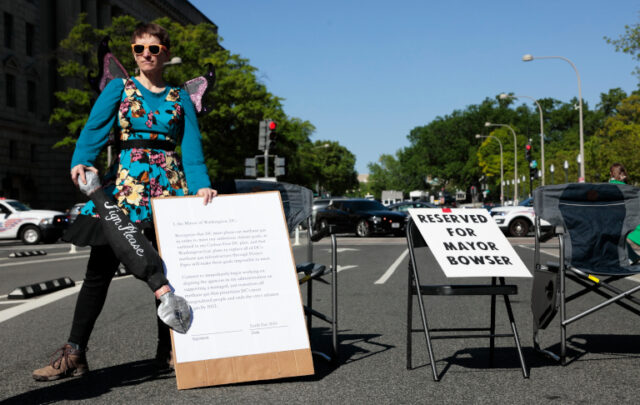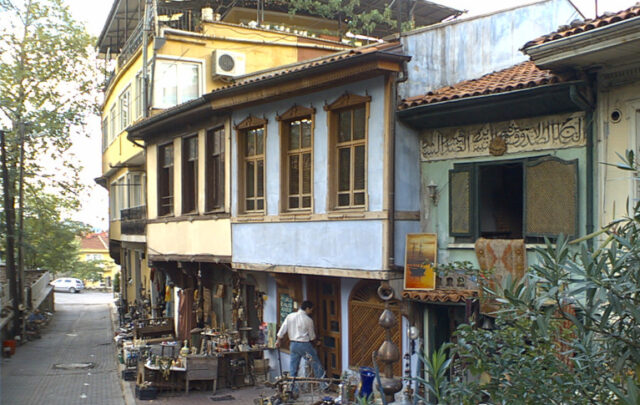This week’s essay, by Bart Everson, was first published at The Wild Hunt and offers an excellent exploration of the history, and perhaps the future, of Gaianism.
—
In a deeply introspective essay from 2014, John Halstead proposes “a devotional religious practice with the world at its center.” I find inspiration in that phrase, which has stuck with me for years.
Yet I stumble over one word in particular. I might have said “Earth” rather than “world.”1 It gives me pause to think about these words we use. What’s the difference between world and Earth?
One nuance of “the world” is that it often refers to the sphere of human affairs, usually excluding the other beings who share the planet with us. Indeed, this was one meaning of the Old English root, woruld or worold: “human existence, the affairs of life.” When people speak of “the eyes of the world,” for example, it’s generally understood that these are human eyes, and not the eyes of cattle or termites. By way of contrast, the word “Earth” can connote the soil and dirt and rocks as a separate substance upon which we humans merely tread.
Such usages belie a fundamental reality. The world is not separate from the Earth. It’s a dream that we humans have, a dream that has emerged from Western Europe and colonized the minds of humans everywhere. We’ve dreamed ourselves separate, superior, in the image of a divine supernatural being. Are we waking now from that dream, from that nightmare? Following on centuries of global exploitation, we have slowly developed a global awareness of global consequences, many of which are negative from an ecological perspective.
An ethical global perspective is necessary today. We must find the unity of Earth and the world. It would be helpful if we had a word, better yet a name, that encapsulates this unity. Fortunately we do. The name of Gaia is helpful in this regard, reminding us that humanity is part of a greater being. Some folks, myself included, are working to develop a religious philosophy around this idea. But does Gaia need another “-ism”?
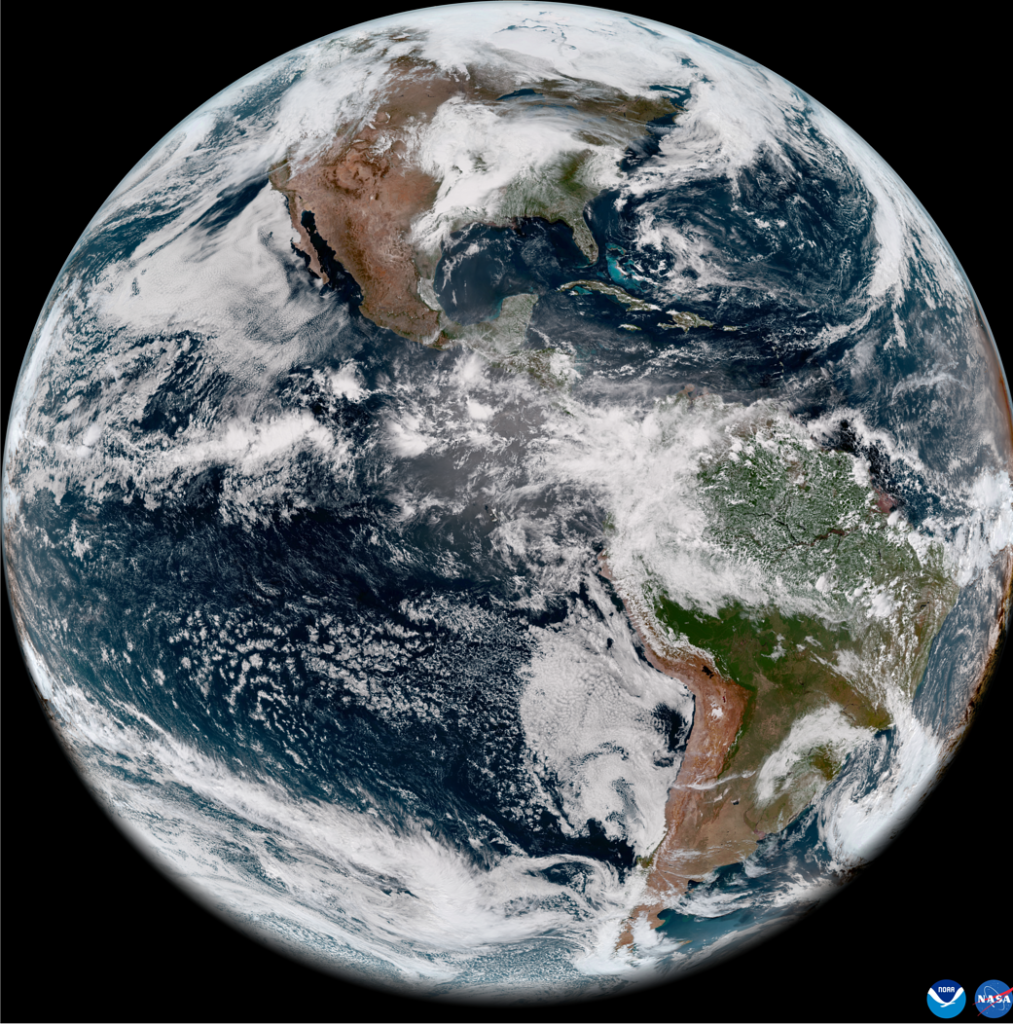
What this -ism is all about. (New image of the Earth from NOAA via the recently launched Geostationary Operational Environmental Satellite (GOES-18))
Definitions
Gaianism is a devotional religious practice with Gaia at its center.
That’s my working definition, inspired by John Halstead, but there are others:
- Erik Assadourian defines Gaianism as “a religious philosophy that grants the living Earth (Gaia) its rightful place at the center.”
- Dan McKanan defines it as “the view that the whole world constitutes a living organism, all of whose components have equal and intrinsic value,” distinguishing secular and religious variants. (Eco-Alchemy: Anthroposophy and the History and Future of Environmentalism, 2017)
- Wikipedia currently describes it as “an earth-centered philosophical, holistic, and spiritual belief that shares expressions with earth religions and [P]aganism while not identifying exclusively with any specific one.” (The article as a whole could use some work.)
- Encyclopedia Britannica doesn’t even have an entry on Gaianism as of 2022, and my spellchecking programs don’t recognize the word at all, which gives some indication of how new the term is.
- The earliest coherent definition I’ve found is from the 1989 textbook New Models in Geography: “faith in the rights of nature and of the essential need for co-evolution of human and natural ethics.”
Provenance
There are many precursors to Gaianism. Earth reverence is ancient. The name of Gaia is ancient; though the actual cult of her worship would seem to have died out thousands of years ago, there have almost certainly been revivals of which I am unaware. Xenophon tells us that Socrates hinted at something that sounds like Gaianism: “Earth of her own will gives lessons in justice and uprightness to all who can understand her meaning.” But please bear with me as I fast-forward to the 20th century.
Intriguingly, McKanan argues that the Austrian mystic Rudolf Steiner laid the groundwork for Gaianism with the development of anthroposophy (particularly as it was influenced by Sir George Trevelyan) while making clear the distinctions between these two camps. In a nutshell, anthroposophy is centered on the human, seeing humans as a part of nature but also at the top of a natural hierarchy. Gaians may argue about the role of humanity, but we generally tend to see our species as “plain members” of the biotic community, per Aldo Leopold’s land ethic of the mid-20th century.
Gaianism as an insurgent (or resurgent) worldview in reference to a primordial divinity, explicitly named as such, would seem to come into existence only after James Lovelock’s Gaia hypothesis was made public in the early 1970s. The ideology gained traction in the 1970s and 1980s,2 such that by 1989, the aforementioned New Models in Geography describes Gaianism as “a relatively new word in the environmental dictionary.”
This text links Gaianism to the ancient Greek notions of Earth justice as well as Lovelock’s scientific innovations, and the Chipko “hug-the-trees” movement is cited as an example. (This was a 1970s ecofeminist forest conservation uprising in Uttarakhand, India, wherein women protected trees from logging with their bodies.) Similarities between Gaianism and deep ecology are noted, as well as manifestations among mystics and romantics and radical green anarchists.
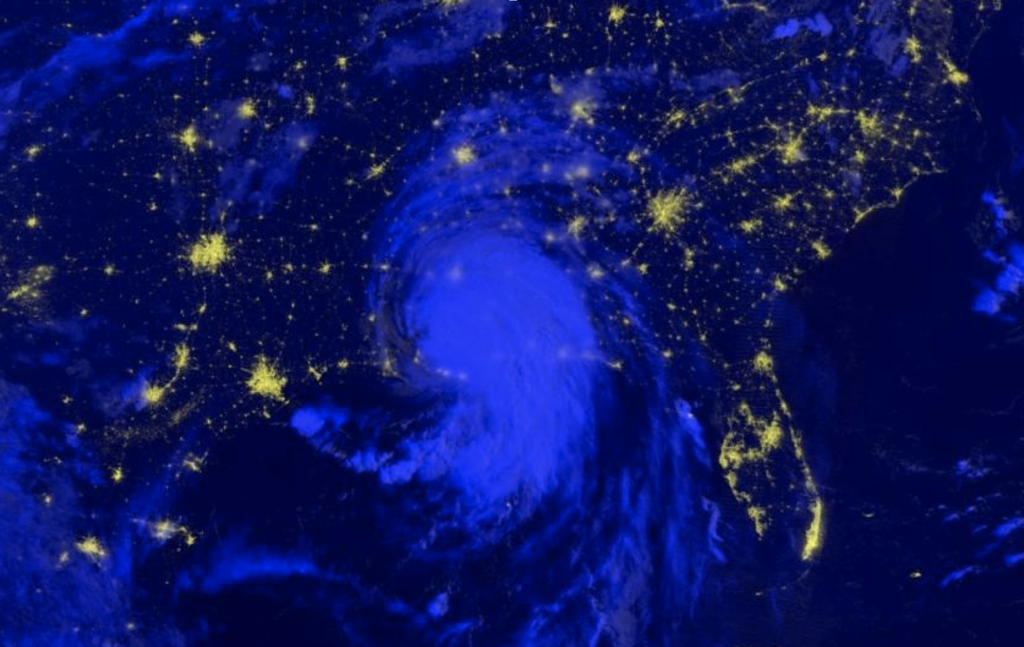
“Earth of her own will gives lessons in justice and uprightness to all who can understand her meaning.” (Image by NASA)
Organizing
I suspect that those who subscribe to Gaianism, actual practitioners who identify as such, may be skeptical of organized approaches to religion. They may not even think of Gaianism as a religion. They may be happy doing their own thing, and less interested in dialog with others, much less forming organizations.
That’s another complicating factor: I am not aware of any organizations dedicated to the promotion of Gaianism — at least, not until very recently.
There are organizations that come close. They run a spectrum from those that are highly organized but not exactly religious,3 to those that take a religious approach but are not necessarily well-organized.4 There are smaller groups operating in local milieus, as well as groups focused on Earth-based spirituality in a general way.
As far as I can tell, however, there have been no organizations operating at a global (or even national) scale to promote a devotional religious practice with Gaia at its center. If they’re out there, they’ve kept a low profile. I’ve been looking for a decade. That is changing now, with the formation of the Gaian Way. Made up of self-identified Gaians, myself included, we are collaborating to develop, define, and spread a Gaian religious practice, both through the internet, as well as in local communities through the formation of Gaian Guilds. As of this writing, three Guilds are currently active, in Connecticut, Honolulu, and New Orleans.
Aspirations
As all of this suggests, the very existence of Gaianism is marginal; its meaning is obscure, confused, and contested. My working definition is more of a personal aspiration: what I’d like it to be. I will explicate it by components.
- Devotional: We are ardently and passionately loyal to Gaia. It’s important to remember, always, that we are part of Gaia. Our devotion must include a devotion to self, but it does not end there. It expands to encompass all of Gaia, whom we may understand as a larger self. Our practices aim to foster and increase our sense of devotion; we devote ourselves and our lives to this practice.
- Religious: It’s my understanding that religion is a collective response to the deepest questions of our existence. Spirituality is individual; religion is collective, and collective responses are essential, given the human-precipitated crises of Gaia today. We need something of what Assadourian calls “missionary zeal.”
- Practice: These are not theoretical abstractions to be discussed and debated as intellectual exercise only. Vigorous debate can be a means of discerning truth, but there must also be a practical application of our discernment. The way we live our lives is the practical application of our philosophical commitments. Special times and places can be set aside solely for practice, but the idea is to carry the practice forward into all aspects of life.
- Gaia: Hopefully you, the reader, have some idea already about who and what Gaia is. In my typical conversations with “regular” people, I rarely get past the stage of explaining the concept of Gaia. One reason I want to promote Gaianism is to have conversations with people who already understand! For my part, I understand Gaia to be “a metaphor for the coevolutionary, interconnected, planetary ecosystem.” This is a thoroughly naturalistic understanding.5 Our understanding can always be enriched, and so I endeavor to continually study and learn about Gaia. Her mysteries will never be exhausted.
- Center: I’m ambivalent about the metaphor of centrality. As I’ve noted elsewhere, I’m inspired by ecological webs generally and the idea of Gaia especially. I understand Gaia to emerge from the “tightly coupled dance” of evolution, with “life and the material environment as partners” (Lovelock) — a dance which has no particular species at the center. I even prefer the term “Earth-based” over “Earth-centered” as a way of describing my spirituality. Perhaps it would be better to refer to a basis or a context rather than a center. After all, we are embedded within Gaia, not the other way around. And yet, there’s something to be said for the image of holding certain ideas and values in our center, in our hearts.
Speaking of context, there is finally the question of how to locate Gaianism within the landscape of new religious movements. This is an exercise better left to scholars who study such things. Those of us who engage the practice and actively work to grow its social structures are too close to have the necessary perspective.
Nevertheless, as one who labors in academia and follows such scholarship in a dilettantish way, I can’t resist a few observations. While an association with the New Age is perhaps inevitable, I suggest that Gaianism as I construe it has more in common with certain forms of Neo-Paganism, particularly the strand of Earth-based spirituality sometimes labeled as Eco-Paganism. Such distinctions are lost upon the general public, but they may become important as the Gaian identity comes into focus.
It may be that Gaianism doesn’t fit comfortably in any of these categories, that it is a different thing all its own; that assertion smacks of hubris, but it may be a necessary illusion for the development of our path.
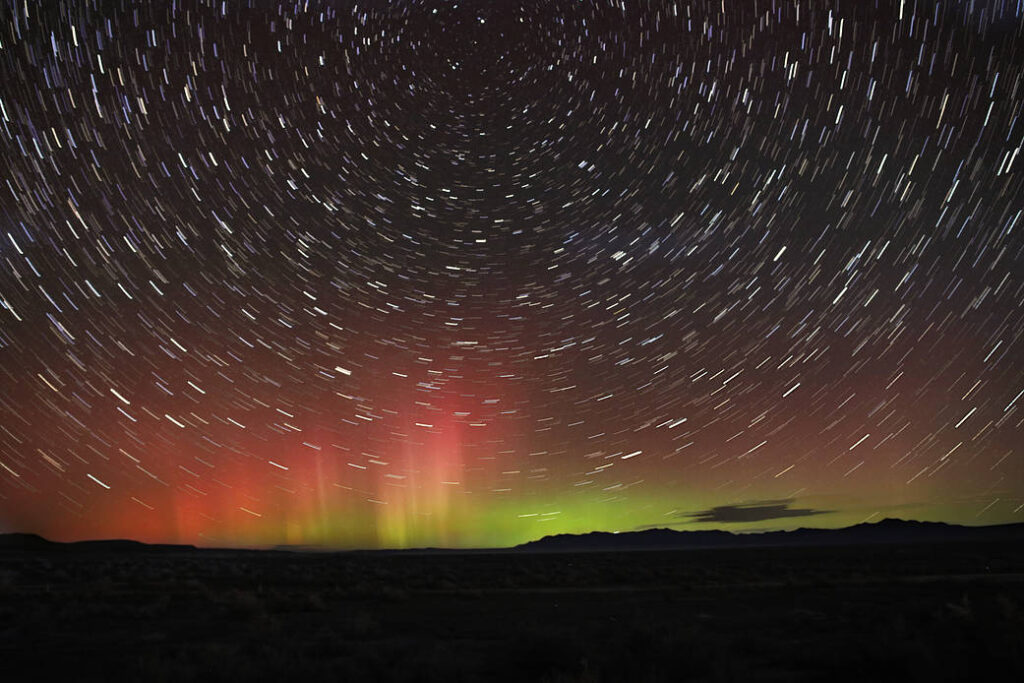
Just as humans are embedded in Gaia, so is Gaianism. (Image by NASA/Bill Dunford)
Endnotes
1. John clarified for me that by “the world” he intends a reference to “the physical universe, or at least the part of it that is accessible to me.” As Bruno Latour points out forcefully in his new book, After Lockdown, the only part of the Universe which is truly and directly accessible to us is the Earth. John’s essay also makes reference to both “nature-centered” and “earth-centered” practice. This last is my main interest here.
2. The earliest usage of the word “Gaianism” that I’ve laid eyes on is from 1985, but Google’s Ngram viewer indicates it cropped up a decade or so earlier. Possibly the first published reference would be in the works of Bill Mollison on permaculture. The first scholarly reference from a presumed non-practitioner might be from 1983 or 1984; my research has led me to a couple articles from Timothy O’Riordan, published in 1985. See, for example, “Recent Developments in Environmentalism,” which includes this passage: “Gaianism tells us no matter how much the technocentrist believes he or she can cope and find an answer, human beings will always ultimately be ignorant of the full workings of the earth’s system.” O’Riordan references two earlier articles by J. Donald Hughes and Stephen R. L. Clark, which touch on Gaia; I haven’t been able to access the full text for either. Another intriguing reference comes in 1998 in Robert Glenn Howard’s “Researching Folk Rhetoric: The Case of Apocalyptic Techno-Gaianism on the World-Wide Web.”
3. Toward the secular end of the spectrum, there’s the Gaia Trust, for example, a Dutch charitable trust that has done incredible work to promote the formation of ecovillages around the world. That’s very much a Gaian concept, and the Trust also supports the transition to a ‘more spiritual future society.” Then there’s the Gaia Foundation, based in London but operating worldwide to help small-scale farmers, promote Earth jurisprudence, protecting sacred lands and waters, and much more, all very Gaian. There’s also Gaia University International, which implements a distinctively Gaian pedagogy, and the Evolutionary Gaia Group, which works to advance scientific research in and around Gaia Theory, to cite just a few examples. These all appear to be great groups doing great work; I commend them and hope to ally with them whenever possible. However, none of these groups style themselves as a religion per se.
4. At the other end of the spectrum are explicitly religious groups like the Church of Gaia. With a focus on shamanic herbalism, they made a splash in the early 1990s; they live on in the Foundation for Gaian Studies, but no longer organize as a church per se. There is also the Corellian Nativist Tradition, essentially a form of Wicca, which is home to a number of Gaia-inspired subgroups: not only the Temple of Gaia, but also the Universal Temple of Gaia, Order of the Paladins of Gaia, Guardians of Gaia, and perhaps others. Reformed Druids of Gaia dates from Samhain 2006, and my certificate of lifetime membership has been hanging on the wall of my office since 2012; but while they’re undoubtedly receptive to Gaia Theory, their name actually reflects the global growth of their “dis-organization”: a recognition that Reformed Druidism had “grown beyond the borders of North America.” The Covenant of Gaia Church of Alberta was a legally-recognized church and an eclectic Wiccan coven based in Alberta, Canada; despite the name, they honored “a multiplicity of female and male deities” and are possibly now defunct. The internet is littered with evidence of other, smaller efforts that are apparently no longer in existence, such as Gaiaist Wicca, Gaiaism, and Gaianism.com (not to be confused with Gaianism.org). These were minimally organized, or in some cases simply the musings of lone individuals.
5. How important is philosophical naturalism to Gaian practice and doctrine? I tend to think it is pretty darn important, second only to reverence and love for Gaia. I think we can make common cause with anyone who shares that devotion, but I suspect that without a strong commitment to thorough-going naturalism, we end up recreating the very wound we are trying to heal.


